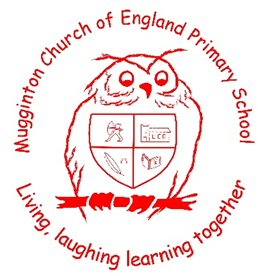
Writing at Mugginton
Writing is an essential skill. The ability to write with confidence and clarity is a tool which will support a child through life. It is our intent that children understand the social function of writing – engaging with different genres and considering the writer’s purpose and goals.
It is our intent that every child develops a progressive understanding of grammatical conventions, the way in which punctuation aids understanding and how to apply spelling rules. It is also our intent that all children have a joined, legible and increasingly efficient handwriting style as they progress through school. We intend to impart our pupils with the knowledge, understanding and skills they need in order to reach their potential as individuals
Using our Writing Skills Progression Document, we identify what pupils should know by the end of each year group and link to prior learning. These enable teachers to identify and plug gaps in pupil’s knowledge and skills.
The key concepts we have identified for writing have been carefully considered and identified as the core knowledge and skills required to successfully achieve in all areas of the curriculum. The Key concepts and second order concepts are revisited and developed as the pupils move through the school to ensure the knowledge, skills, behaviours and attitudes are firmly embedded within long-term memory.
Key concepts:
1) Composition – Children are taught the structure of different types of text and to write creatively.
2) Transcription – Children are taught to write legibly and with increasingly accurate spelling.
Second Order Concepts
Planning – Using real texts, children are taught the features of types of text and how to plan.
Structure – Children are taught to write cohesively in a range of styles
Vocabulary – Children are taught to use adventurous language
Grammar – Children are taught to construct sentences which are grammatically correct.
Punctuation – Children are taught to use accurate and increasingly higher-level punctuation.
Spelling – Children are taught spelling strategies to improve their writing.
Handwriting – Children are taught to form letters correctly & fluently.
Writing Lessons at Mugginton
Academic research, including experimental and random control trials (RCTs), systematic reviews, meta-analyses and case studies all indicate that the following broad lesson structure is effective for the teaching of writing (Young & Ferguson 2021a, 2022). At Mugginton, we consider this to be a creative, individual and fun ‘Writing For Pleasure’ approach.
The key components of our writing lessons are clear and consistent (although are, of course, adaptable).
1) Mini-lesson
2) Writing time
3) Review and class sharing.
Routine does not mean rigidity – our staff know that a good routine always has a component of flexible response. Our skilled teachers know what a good writing lesson typically involves and have a shared language they use with the children (eg Harris 2021).
Kaufman (2022) presented examples of adjustments to this lesson routine which we use at Mugginton:
Instruction needing more time than a usual mini-lesson. For example, when the teacher wants to read and discuss a class reader or other text with the children.
During pupil-conferencing, the teacher notices a common key misconception (for example, incorrect use of a spelling rule or punctuation). They shorten writing time and deliver an additional mini-lesson before asking the children to correct the misconception.
Sometimes, the class needs to carry on from the previous lesson and no mini-lesson is required.
Often, we use a sharing session in the middle of writing time to give children an opportunity to reflect on how they are getting on using and apply the learning from the mini-lesson and ‘magpie’ ideas from their classmates (Young & Ferguson 2022).
We begin a lesson by asking the children to review with their classmates what they crafted yesterday before continuing. We teach a mini-lesson based on what comes from the pupil-conferencing.
The class continue on from what they were working on yesterday. Pupil-conference runs for the whole of writing time (choosing children to share examples whilst everybody is working).
Our teachers recognise that it is vital, when planning, to think carefully about what we want the children to achieve by the end of the lesson (the process goal) and make sure the children understand what is expected of them (Young & Ferguson 2021a, 2022). Without clarity of expectation for the children, their writing/compositions can lose focus (Whittick 2020).
Impact:
A wide range of strategies are used to measure the impact of our Writing curriculum. The impact of learning is measured through formative and summative assessment. Children are assessed against key performance indicators (Key Objectives) at the end of each teaching sequence and by end of key stage exemplar materials. The Key Objectives are kept in the front of each child’s English book and are easily visible to both children and teachers. English books are scrutinised by the Headteacher on an at-least termly basis to assess strengths and weaknesses in specific teaching sequences.
Teachers select at least three pieces of writing to be assessed each half term and a staff moderation session is conducted with all teachers each term to make sure our judgements are accurate. The school was visited by a Local Authority moderator in July 2022 and we were delighted that every one of our judgements was confirmed by the moderator.
The effectiveness of the Writing curriculum is also monitored through pupil and parental voice throughout the course of the year.
Handwriting at Mugginton
We want all of our children to take pride in their presentation and be the best person they can be. We use the Twinkl Handwriting Scheme to help the children develop a continuous cursive style of writing. We aim to make the children’s handwriting an automatic process that does not interfere with their creativity or work rate. We promote and teach pre-cursive handwriting in the Foundation Stage and Year 1 and cursive, joined-up handwriting from Year 2. As children progress through Key Stage 2 they will continue to work on the size and orientation of their letter formation. Once a consistent, fluid and correctly orientated script is achieved, children will achieve their pen licence and can write in either handwriting pen or fountain pen.
The key advantages of joined handwriting are:
By writing each letter in one movement, children develop a ‘physical memory’, making it easier to produce the correct shape over time.
The starting and finishing points for all continuous cursive letters are easier to remember (they all start on the line).
As letters and words flow from left to right, children are less likely to reverse joined letters which are typically difficult (e.g. b/d, p/q).
A clear distinction is made between capital letters and lowercase.
The transition to joined-up writing is taught progressively and leads to fluent writers by upper key stage two. Fluent, joined writing allows children to concentrate on the composition of the writing, rather than thinking how to form letters.
Words written in one set of movements, without the pencil being taken off the paper, helps the ‘muscle memory’ store spellings.
The continuous flow of writing ultimately improves speed and spelling and allows children to feel proud of their work.
We provide an environment which is conducive to good writing by ensuring that tables and chairs of a suitable size and height are available for the children’s use; that there is adequate space and good lighting; that the atmosphere is calm and purposeful; and materials are accessible, suitable and varied, and of good quality.
Children are introduced to a variety of writing tools and equipment as they progress through school: pencils, felt pens, handwriting pens, biros, chalk, crayons and paper of different colours, shapes, textures and types. Classrooms are equipped with a variety of materials and writing tools, to encourage and motivate children to write for their own pleasure and enjoyment, and to give them opportunity to practise handwriting skills.
Funky Fingers
We use ‘funky finger’ activities within reception as it encourages the development of fine motor and language skills that are essential for hand writing. Funky finger activities are differentiated to address physical needs and work different parts of the shoulder, arm, wrist, palm and fingers. We find that these activities have many benefits including;
Promotes fine motor skills
Encourages communication and language skills
Supports hand writing skills through fine motor strength and control
Repetitive fine motor skills in a fun way
Through improving fine motor skills children develop independence in things such as buttoning their own coats or opening their own packets
Any child working below their age-related expectation will receive a tailored curriculum with personalised objectives and additional support and intervention. This will enable all children to build the skills and knowledge needed to bridge the gap between themselves and their peers, enabling them to reach their full potential.
Spelling at Mugginton
We want our children to be able to spell accurately ready for the next stage of their education. English is a difficult language with a deep orthography so spelling complex words correctly is extremely difficult. For example, of the first 100 High Frequency (most common) words, over 50 are irregular (not phonetic and must be read as a unique word).
Children from Years 1-6 are given a list of spellings to learn each Friday in preparation for a test the following Friday. The key documents we use to plan our spelling lists are:
The First 100 High Frequency Words
The Next 200 High Frequency Words
To set spellings, we use SpellingFrame (spellingframe.co.uk). Each child has a unique account with interactive games to help them learn their spellings at home.
Writing policy

Designated Safeguarding Lead
Mr J Green
Designated Safeguarding Lead: 1st cover
Monday, Tuesday: Mrs D Wallen; Wednesday - Friday: Mrs E Dennis
Designated Link Governor for Safeguarding
Mrs C Stroud
SENCO
Mrs E Dennis




